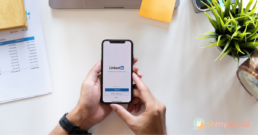Social Media Strategy: A Case Study with DCMS
A marketing strategy for Crown Representative for VCSEs
Overview
We had the privilege of collaborating with the UK's Department for Digital, Culture, Media, and Sport (DCMS) on a transformative social media strategy DCMS project. The challenge was to develop a marketing strategy that would target two distinct audiences: civil servants/commissioners and organisations in the Voluntary, Community, and Social Enterprise sector (VCSEs). Our goal was to make these audiences understand the value of working together with the UK Government, encouraging them to adapt their commissioning behaviours for the greater good.
What we did
- Understanding the Audience: One of the foundational pillars of effective social media marketing is understanding your target audience. In this case, we had two diverse groups: civil servants/commissioners and VCSEs. Our approach began with comprehensive research to grasp their motivations, pain points, and communication preferences. Armed with this insight, we were ready to craft messages that would resonate.
- Clear Messaging and Motivational Communications: The power of plain English cannot be underestimated. To bridge the gap between these two distinct groups, we developed clear and concise messaging. These messages were designed to not only increase understanding but also motivate behaviour change. Our aim was to make it crystal clear why collaboration between civil servants and VCSEs was not just beneficial but crucial for the greater good.
- Event Material: In addition to our digital efforts, we also produced materials that can be used at internal and external events. This was a key component of our strategy to foster engagement and understanding. This involved advising and consulting with speakers to ensure their presentations were engaging and effective.
- Social Media Expertise: A strong social media presence was paramount in reaching our target audiences. We used platforms like Twitter to disseminate our messaging effectively. This was especially crucial given the public sector context of the project, and our previous experience in this domain played a pivotal role.
Results
Engaging Charities and Social Enterprises
- We defined clear objectives aligned with government priorities such as "Levelling Up" and fostering a strong and sustainable VCSE sector.
- Key messages were drafted for various channels, including Twitter, blogs, GOV.UK pages, and LinkedIn.
- Engaging content, including tailored presentations, blog posts, and tweets, resulted in increased engagement and understanding among our target audience.
Presentation to Government Commercial Staff
- We created an engaging presentation showcasing the value of commissioning public services from charities and social enterprises designed to be delivered to government commercial staff. This presentation received positive feedback and demonstrated the potential of the VCSE sector.
Webinar Series
- We created a proposal for a webinar series promoting VCSE readiness to apply for government contracts in targeted sector segments.
Our collaboration with DCMS proved to be a success. Through strategic social media marketing, event planning and clear messaging, we were able to bridge the gap between two distinct worlds and pave the way for a more collaborative future.
Ready to elevate your social media marketing strategy and achieve transformative results? Contact us today to discover how we can help you!
9 Steps to creating a B2B content strategy for LinkedIn
As we know LinkedIn is crucial for B2B companies looking to connect with other businesses and professionals. As the world's largest professional site, over 690 million professionals use the platform to network, research and learn*. Hence, it's essential for B2B companies to create engaging content that resonates with their target audience on LinkedIn.
In this blog post, we will provide some tips and strategies for creating effective B2B content for your LinkedIn company page.
1 - Define Your Target Audience
Before creating any content, it's essential you are clear on who your target audience is. Not only will this help you to tailor your content to their specific needs , it will help you later on if you end up sponsoring your posts through LinkedIn Campaign Manager. Take the time to research your target audience's job titles, industry, interests, and pain points.
2 - Share Valuable Insights and Information
To create engaging content on LinkedIn, you need to share valuable insights and information that will benefit your audience. This could include industry trends, current news, best practices, or thought leadership content. By sharing valuable information, you position your company as a thought leader in your industry, which can help build trust and credibility with your target audience.
3 - Use Eye-Catching Visuals
Visuals are essential on LinkedIn, as they help your content stand out in a crowded feed. According to LinkedIn, posts with images receive 2x more engagement than those without. So, make sure to use eye-catching visuals such as images, carousels, videos, or infographics to accompany your content. When using visuals, ensure they are high-quality, on-brand, and relevant to your content.
4 - Keep it Short and Sweet
The ideal length for a LinkedIn post is between 50 and 150 words, with a clear and concise message. If you need to share a more in-depth piece of content, consider LinkedIn articles.
5 - Use Hashtags
Hashtags are an effective way to increase the visibility of your content on LinkedIn. When using hashtags, make sure to use relevant and specific ones that align with the message and target audience.
6 - Engage with Your Audience
Engagement is key on LinkedIn, so make sure to engage with your audience by responding to comments, asking questions, and starting discussions (polls are useful for this). Engaging with your audience helps you to build relationships, gain insights into their needs and increase the visibility of your content.
7 - Mix Up Your Content Formats
Content formats include text-based posts, videos, images, carousels, infographics and polls. By using a variety of content formats, you can appeal to different learning styles and keep your content fresh and interesting.
8 - Analyse Your Performance
It's essential to analyse your performance regularly. LinkedIn provides insights and analytics on your content's reach, engagement and demographics, which can help you identify what's working and what's not. Use this data to optimise your content strategy and improve your engagement rates.
9 - Consider Sponsored Content
While organic content is essential, it's becoming increasingly difficult to reach your target audience without paid promotion. Consider investing in sponsored content, which allows you to promote your content to a specific audience based on their demographics, interests, and behavior. Sponsored content can help you reach a larger audience and generate leads for your business.
Creating engaging B2B content for your LinkedIn company page requires a strategic approach. By following the tips above you can create a content strategy that resonates with your target audience and generates leads for your business. At Oh my social we understand the importance of creating engaging B2B content on LinkedIn and would be happy to help you create a content strategy that meets your business objectives. Get in touch with us today at [email protected].
*Source: LinkedIn.com
Revising your social media strategy for Covid-19
Recently we've all had to change and adapt the way we do business. The infographic at the bottom of this post shows two things have been dominating conversations on social media: coronavirus and social distancing.
Your existing social media strategy is no longer relevant, and if you continue to post your product or consumer focused content you may appear to be out of touch with the world around us. But how can you stay digitally connected to your community at this time?
A mindset shift is needed with your content approach. Instead of promoting your business, now is the time to think about what responsibility your business or brand owes to your customers and staff during a time of crises.
Everything you do or say should be tied to a wider objective of helping people in your area of expertise. Personal trainer? Jump on Instagram live to do real-time workouts. Beautician? How about a tutorial on how to remove acrylic nails at home. Wellbeing influencer? Why not talk about maintaining mental health under lockdown.
We take a look at how you may wish to reconsider your social media strategy in light of Covid-19.
1. Consider your content principles
- Review your tone of voice - people need clear, simple and honest information right now
- Add value - posting for the sake of it may come across as distasteful at the moment. Everyone is spending more time online and content is everywhere. How will you make their lives that little bit easier?
- Stay up to date - the situation is changing on a daily basis. Being flexible, timely with the latest developments and aligning your message with the current landscape will pay off in the long term.
2. Revise your key topics
Reposition the key topics you talk about in the context of the pandemic. For example, if productivity is a key topic in your content, a working from home focus will resonate with your audience at this time.
If motherhood is a key theme, discuss what it's like to look after children while running a business. Unable to operate as usual due to the pandemic? Share your struggles. Remember we are all in this together - there is respect in vulnerability even in business. It's not about showing off, but showcasing your purpose in action.
3. Consider your channel and content type
Are you sharing information on the right platform for your audience? Remember, you don't need to be everywhere. Also each platform has a slightly different way of communicating - are you adapting your content to suit the platform you are active on?
Simplifying information is appreciated at this time: think infographics, quote cards etc. Engagement for long form video content has never been higher, even if you have to make them on your smartphone. Live video on IG is blowing up at the moment. Doing what you've always done won't be effective enough - consider the new options available to you and execute. Don't be afraid to try new things.
The most effective ways we have found to connect to your audience during this time are:
- Zoom meetings
- Live Q&As
- Email updates
- Behind the scenes content at home
- Stories feature
We'll be sharing more insights on our Instagram page regularly.
4. Consider your reactive social media
This is an opportunity to relieve your audience of questions, concerns and comments relating to your industry at this time. It's also a good opportunity to bolster your reputation via reliable information and positive communications.
It's definitely a good time to be online and to make your presence known - research shows that screen time has increased 76% on average. People worldwide are going through massive transitions: learning new skills, exploring their passions and navigating a new online social life. Many of your content plans pre-Covid won't make sense any more. Don't be afraid to put them completely on hold and revisit the drawing board.
How have you adapted your social media strategy in light of Covid-19? Are you managing to stay connected to your community? Let us know!
8 social media manager interview questions
If you own a business, a side hustle or work in marketing the chances are sooner or later you will be interviewing a social media manager. Most importantly, it's incredible how integral social media has become to business and marketing strategy. It is no longer a side task tacked on the end of an intern or PA's job description, because a good social media manager requires creativity, people skills and contextual understanding.
Some businesses are run entirely on Facebook or Instagram, therefore a good manager will have your social strategy converting into traffic and sales leads in no time (although we recognise this is only a fraction of what social media objectives should encompass)
Read on for our list of example questions on what to ask during an interview with a potential social media candidate :)
Before the interview
Most importantly the candidate should be briefed on the business, what social media platforms and handles currently exist and who your target audience is so they can do some research on you and prepare.
The Interview Questions
1. What social media accounts have you managed in the past, and specifically what tasks did you do for them?
This is a good indicator of experience and the ability to engage communities through content.
2. Have you had a chance to look at our existing channels? Please let me know your thoughts on what do we do well? Which posts need improvement? Is there a new type of post you recommend we try?
This is one of the most important questions. Anyone can be a creative person but do they *get* your business and what you're trying to communicate in a social language?
3. How would your friends describe you in 3 words?
You should note these down to see if they reflect the qualities of a good SMM - essential skills include but are not limited to: competitive, organised, alert, assertive, friendly, open and honest.
4. Which social media tools have you used?
Advanced SMM's will have used scheduling platforms like Hootsuite or Sprout Social. Besides that, it's also good to know what tools they use to help them create content.
5.Do you have your own blog / regularly publish content on your own social media platforms?
This should give you an understanding of their creative writing, design and SEO skills.
Scenarios
1. A user leaves negative comments on a recent post - they are dissatisfied and rude. How do you respond?
This question will assess their attitude to a brand / reputation crises. Ask for past examples.
2. You publish a post on Instagram and after 5 hours it has received just 10 likes - what do you do?
This will assess their understanding of boosting engagement. Look out for any interesting strategies - hashtags, commenting, sponsorship, stories etc.
3. How do you go about putting your own content plan together for the week / month and year?
This will look at their organisational and planning skills for a social audience. Seasonal events and existing content are all aspects to look at.
Good luck - we wish you all the social media manager success!
Need a social media manager? At Oh my social we offer a recruitment service where we will hire and vet a social manager for your organisation. Email [email protected] to get started today.
Have an existing social media manager? We run training courses for social media managers, taking your strategy to the next level. Email [email protected] to get a training session planned.
How to choose a winner for your social media competition
Running a social media competition is a great way to increase engagement and followers online while raising brand awareness. Often, it can also help with sales and the growth of your business. A social media competition can also help to grow your email list in a short space of time, allowing you to reach a new and bigger audience.
Facebook and Instagram are often the platforms of choice for a social media-style giveaway. But before you announce the contest you will need to familiarise yourself with the various stages, protocol,s and tools that will help you along the way, including documentation proving that you picked your winner fairly.
This article will focus on the winner selection process: how do you make it truly random? You don't want to be accused of fraud or favouritism.
Here are three tools we find the most useful when picking a social media competition winner fairly:
1. Random name picker
There are many random name picker tools out there. One that has worked successfully for us in the past is MiniWebTool's random name picker- you just enter one name per line in the text field and then click on the "Pick a Random Name." button. It will then automatically choose a random name for you.
2. Google 'Random Number Generator'
By googling 'random number generator' there are many free tools available (including Google's own), providing a straightforward and fair way to pick your competition winners. To begin with, each of your entries needs to be assigned a number - then enter the minimum and maximum numbers to use on the tool, and select 'generate'. Easy peasy!
3. Woobox's Pick a Winner Tool
If you are running a contest on your Facebook, Twitter, or Instagram timeline, Woobox's Pick a Winner Tool will randomly choose a winner for you free of charge. You will need to sign up for an account and connect to your social media channel.
Then: > select the post you want to use to select your winners >choose whether comments or comments and likes count as entries >select the "Pick Winner" button.
Whichever method you use, remember to take a screenshot of the result to document how you randomly picked the contest winner.
Good luck! Are you running a social competition at the moment? Do you have any questions about it? Let us know below.






